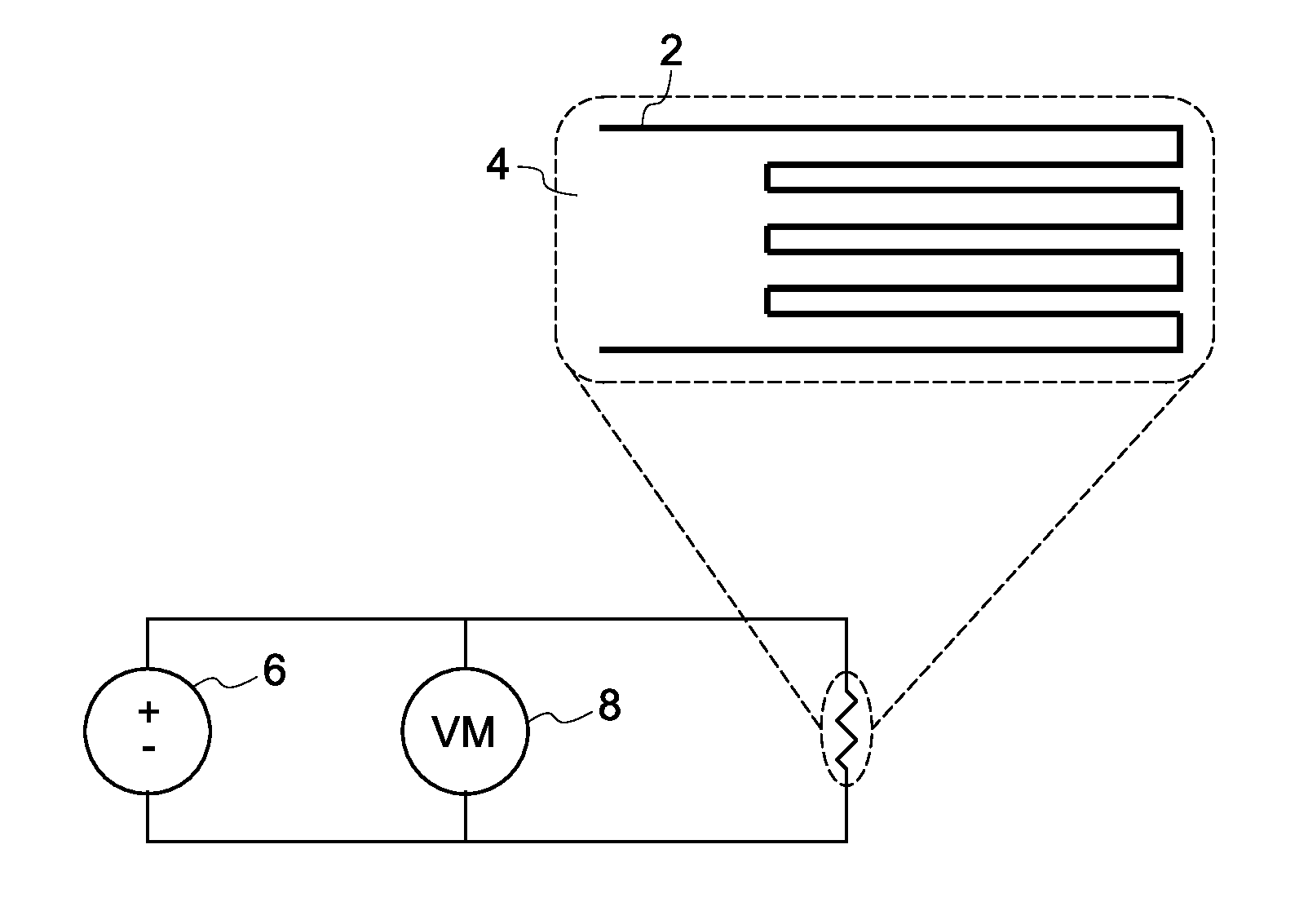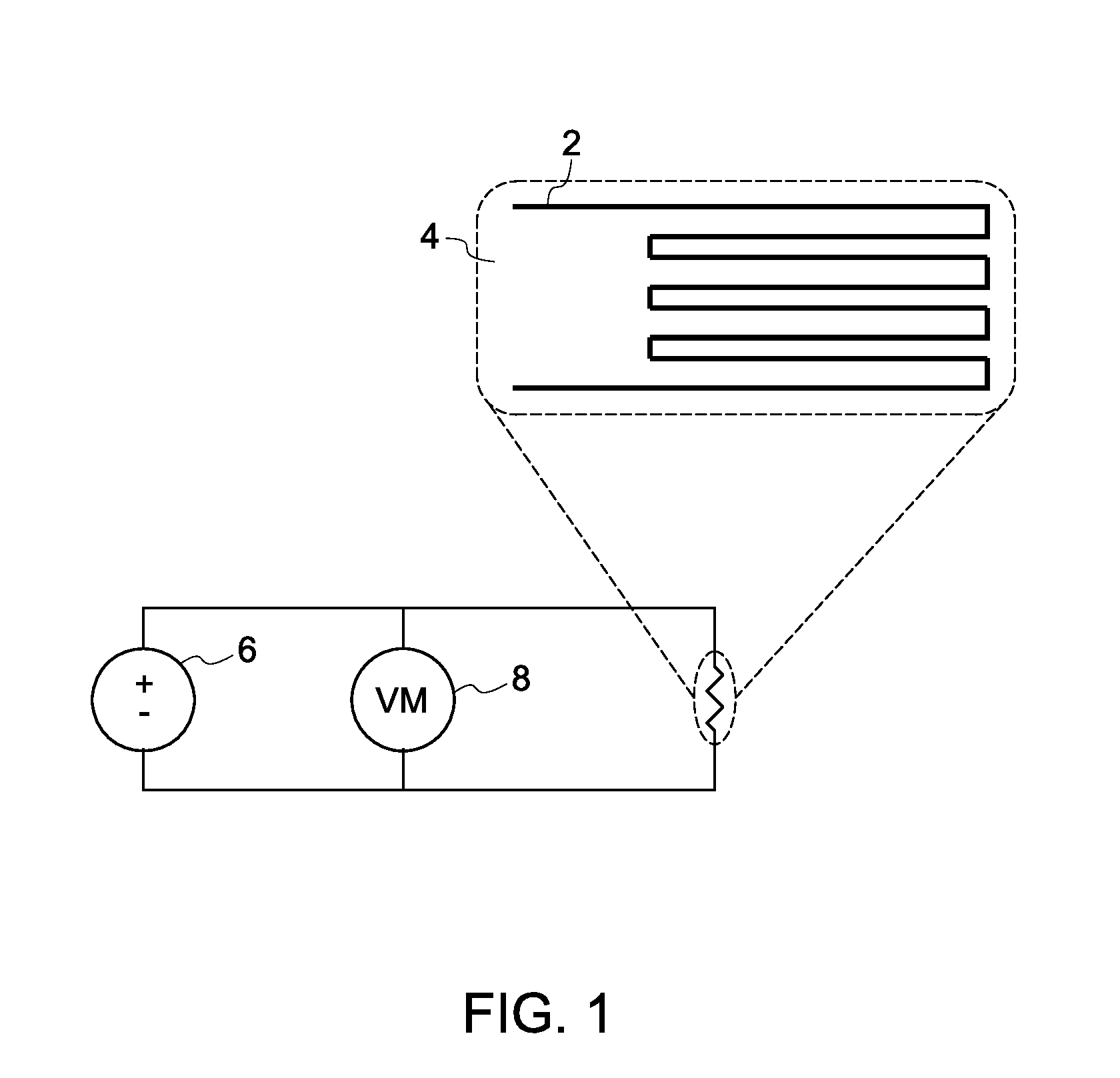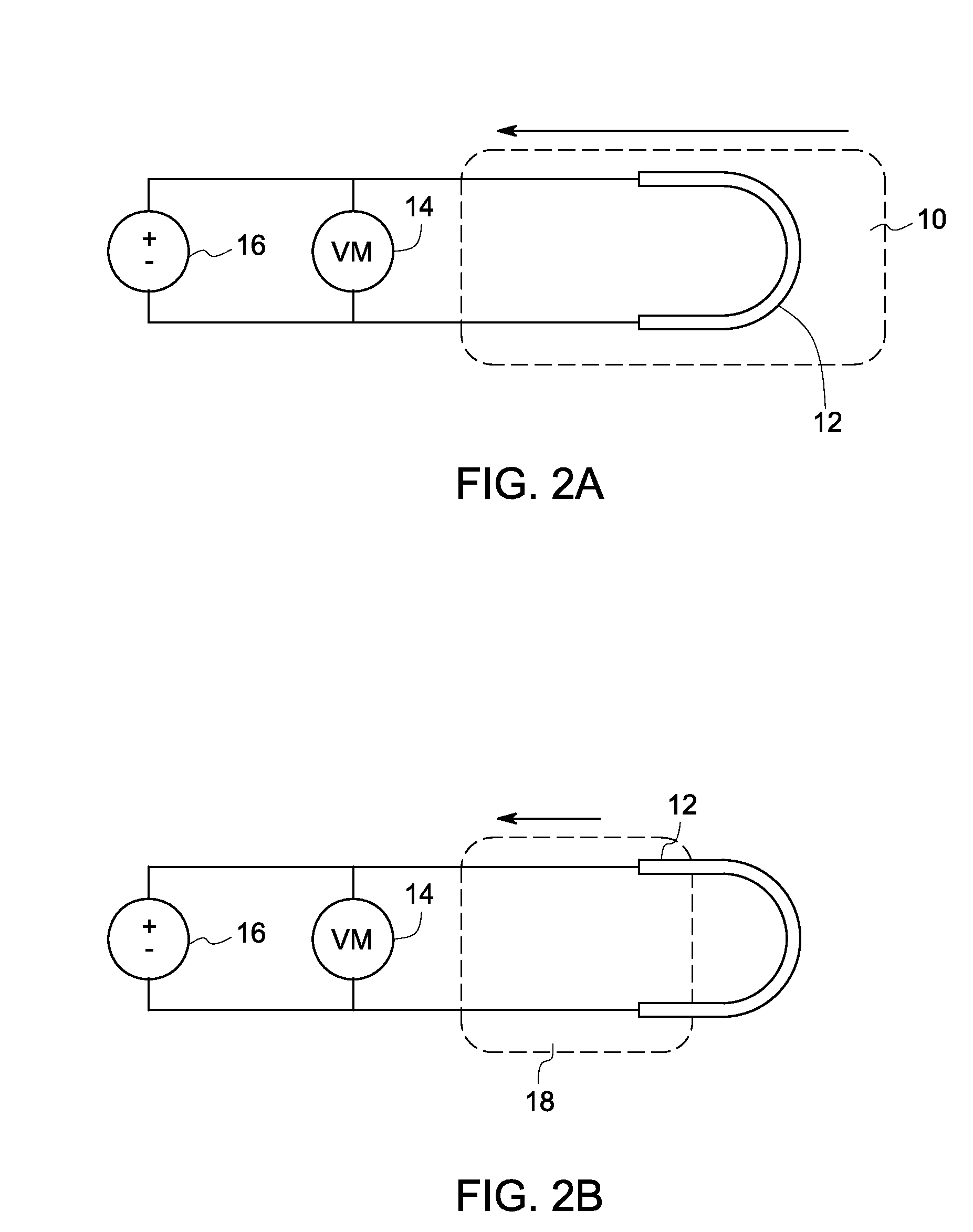Sensor system and methods for environmental sensing
a sensor system and environmental sensing technology, applied in the direction of resistance/reactance/impedence, instruments, disinfection, etc., can solve the problems of insufficient stability of materials, inability to withstand the thermo-mechanical or thermo-chemical environment present in high-temperature equipment and systems, and high porosity and the tendency for crack formation
- Summary
- Abstract
- Description
- Claims
- Application Information
AI Technical Summary
Benefits of technology
Problems solved by technology
Method used
Image
Examples
example 1
Determination of the High Temperature Resistant Properties of the Sensor Material
[0064]In one example, the environmental resistance of the sensor material was tested, using cast iron samples, by exposing the samples to a highly reactive copper (Cu) melt in vacuum, at a temperature of at least 1085° C. The composition of the composite material (in volume percent) is 66.9% SiC, 8.1% (Mo,W)5Si3C and (Mo,W)5Si3, 6.9% (Mo,W)Si2, and 18.1% volumetric porosity. The Novotnyi phase, (Mo,W)5Si3C, and (Mo,W)5Si3 were not distinguishable using scanning electron microscopy, and therefore they are included together when reporting composition. The tungsten to molybdenum atomic ratio for (Mo,W)5Si3C and (Mo,W)5Si3 is 0.28; and the tungsten to molybdenum atomic ratio for (Mo,W)Si2 is 0.19. The silicides are all silicon stoichiometric.
[0065]In a control set, an uncoated cast iron part was exposed to a Cu melt (74), as shown in FIG. 7B. In a test sample, the cast iron part was coated with the composit...
example 2
Determination of the Thermo-Chemical Resistance of the Sensor Material in a Gasifier
[0066]In another example, a Hexylloy™ (commercial silicon carbide) part was used as a control, and remained uncoated (as shown in FIG. 8). The part was exposed to slag at a temperature, which is in a range from about 1400° C. to 1500° C., in vacuum. The slag was in a liquid form at these high temperatures. The Hexylloy™ part was then cooled to room temperature. The surface of the part showed a small wetting angle. Hence, in the thermo-chemical environment, the slag (76) (in FIG. 8) was found to stick and easily spread over the surface of the Hexylloy™ part, thereby corroding the part.
[0067]To determine sensor material properties in a similar environment, two different sample parts were tested. One was made of a bulk slab of refractory silicon carbide composite material, with a composition similar to that described in example 1 (FIG. 9A). The other sample was formed of a Hexylloy™ material, coated wit...
example 3
Resistive Sensor Response to Temperature Change
[0068]A sensor system was designed to include a sensor comprising a resistive sensor material, a pair of electrodes, a substrate, and a voltage-measuring device. The resistive sensor material used was a refractory silicon carbide composite material with the same composition as mentioned in Example 1. For the composite material sensor, platinum wires were used for the electrical circuit. Platinum wires were attached to two sides of the sensor. A platinum slurry was used to make the electrical contact between platinum wires and the refractory silicon carbide material. The slurry was heat treated to sinter the platinum in an inert atmosphere, resulting in an arrangement for resistance measurement as shown in FIG. 1. Two additional platinum wires were attached to one side of the sensor. One of the wires was attached to a power supply, and the other wire was attached to a voltmeter used to monitor the voltage across the sensor. The opposite ...
PUM
| Property | Measurement | Unit |
|---|---|---|
| operational resistance | aaaaa | aaaaa |
| operational resistance | aaaaa | aaaaa |
| volume % | aaaaa | aaaaa |
Abstract
Description
Claims
Application Information
 Login to View More
Login to View More - R&D
- Intellectual Property
- Life Sciences
- Materials
- Tech Scout
- Unparalleled Data Quality
- Higher Quality Content
- 60% Fewer Hallucinations
Browse by: Latest US Patents, China's latest patents, Technical Efficacy Thesaurus, Application Domain, Technology Topic, Popular Technical Reports.
© 2025 PatSnap. All rights reserved.Legal|Privacy policy|Modern Slavery Act Transparency Statement|Sitemap|About US| Contact US: help@patsnap.com



